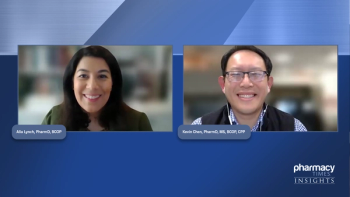
Collaborative Care For MPNs
Drs Haumschild, Howe, and Gilreath contribute their final perspectives for maximizing care management between providers and patients with myeloproliferative neoplasms.
Episodes in this series

Ryan Haumschild, PharmD, MS, MBA: Before we end this discussion, I’d like for you both to weigh in on the importance of treatment adherence. How do you support it? How do the MVP pharmacy technicians play a role in it? How do you assess patients’ satisfaction with their treatment? How are you managing some of these adverse effects to make sure patients stay on therapy and have really good proportions of days covered?
Jeff A. Gilreath, PharmD: Medication adherence starts with medication access. You can’t have adherence if you can’t gain access to a medication. Our amazing technicians gain access to our specialty medications sometimes the same day or within 48 hours. But when we look at our data, it’s typically within 9 days. This is fewer sleepless nights that our patients have to worry, “When am I going to be able to start treatment and reduce my symptoms and prevent transformation or other sequelae from the disease?”
In regard to patient satisfaction, we have frequent touch points with the patients. The every 3-month visits are really helpful to determine if patients are struggling with therapy. Not everyone will call into the clinic when they have an adverse event, although we’d like to think so. A lot of people will simply try to figure it out on their own. On occasion, we wait longer periods of time than we’d like to be able to assess that. But when the patient calls in, we address things immediately and try to make sure that they’re happy with their therapy.
In terms of adverse events, it’s the same thing. When someone calls in with an adverse event, the provider will be informed and we’ll discuss it among the team. I usually partner with a nurse to gain all of the necessary information, try to collect what I think the hematologist will need to make a determination and respond to that request, and then we deliver it as a plan to try to improve the efficiency of the clinic.
Ryan Haumschild, PharmD, MS, MBA: Excellent. Sharita, I know you also often deal with patients with adverse effects and keeping them motivated to stay on therapy. Are there any unique challenges that you have to overcome or unique strategies that you utilize in the community setting?
Sharita Howe, PharmD: I wouldn’t say the challenges or strategies are unique by any means, but as pharmacists, because we’re so trusted and more accessible, our patients are little more willing to give information. A lot of times, I notice that our patients may not report something to the physician, but when we call or they show up for their refills, we’re able to tease more information out of them. That’s something important to keep in mind when we’re engaging our patients, that sometimes we may take for granted that the patients are entrusting us with more information, so we need to make sure we’re relaying the information to the care team.
We can also support the physician team when the patients are started on supportive therapies for their medication. If they’re started on Zarxio [filgrastim-sndz] or some growth stimulating agent, are we adding Claritin to help with bone pain? We focus on our patients in that way because if we’re able to manage the symptoms of these diseases, you’re right, we’re able to make sure that these patients are adherent to therapy and ultimately impact their quality of life.
Ryan Haumschild, PharmD, MS, MBA: I really like this shared discussion because I have taken away some things that are going to help me implement quality improvement projects around patients with MPNs and also manage and improve adherence. It has been a great discussion. Thank you, Sharita and Jeff, for your expertise and time. And to our viewing audience, we hope you found this Pharmacy Times® Practice Pearls to be rich and informative.
Transcripts edited for clarity.
Newsletter
Stay informed on drug updates, treatment guidelines, and pharmacy practice trends—subscribe to Pharmacy Times for weekly clinical insights.



